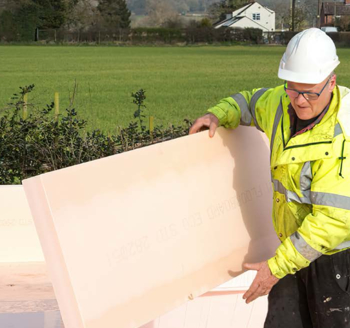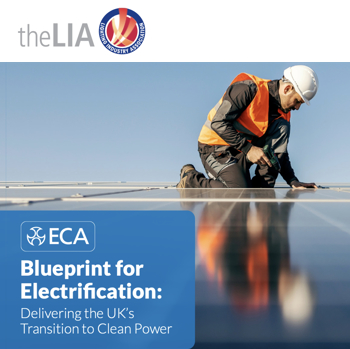Regeneration
Contents |
[edit] Introduction
Regeneration is a broad term that, in an urban context, covers large-scale works intended to promote economic growth as well as smaller-scale works that improve the quality of life. Urban regeneration is sometimes referred to as ‘urban renewal’.
Regeneration can involve the investment of public money to encourage and direct private finance into a particular area. Governments often define regeneration as being a supportive measure in areas of economic and social decline where market forces have failed.
According to Tallon (2010), urban regeneration is ‘...a comprehensive and integrated vision and action which leads to the resolution of urban problems and which seeks to bring about a lasting improvement in the economic, physical, social and environmental conditions of an area that has been subject to change’.
In the UK, regeneration became a leading policy of the ‘New Labour’ government between 1997 and 2010, which set about trying to reverse the decline in areas of the country that had suffered most from the downscaling of the industrial and manufacturing economy under Thatcher’s Conservative government.
Grand projects such as the Millennium Dome and the 2012 Olympic Park were developed to stimulate growth and bring back into use vacant, brownfield, and contaminated sites that were seen as holding back the development of their surrounding areas. Projects such as these contributed in particular to the radical reshaping of East London‘s physical landscape. However, they were not always entirely welcomed, with local residents sometimes feeling excluded, and local businesses being moved out to make space. In addition, it has taken a great deal of time for the regeneration of one area to have a knock-on effect on its neighbours, with improvements tending to stop abruptly at the boundary of the regenerated site.
According to the Review of Sub-national Economic Development Regeneration, published by the Department for Business, Enterprise and Regulatory Reform, and Communities and Local Government in 2007, regeneration should:
- Secure long-term change by tackling barriers to growth and reducing worklessness – moving communities and individuals from dependence to independence.
- Improve places and make them more attractive to residents and investors, enabling new and existing businesses to prosper.
- Foster ambition and unlock potential in the most deprived areas by breaking cycles of poverty, enabling everyone in society to gain more power in decisions made which affect them, and to take advantage of the economic opportunities that regeneration brings.
- Supplement (not replace) and help to improve the flexibility and targeting of the mainstream government services in under-performing areas.
- Deliver sustainable development which contributes to people’s satisfaction with where they live as well as a wider Government’s goals.
- Open up opportunities to create more equal communities.
A number of private sector developers specialise in regeneration projects, often in partnership with local authorities and other public bodies, helping to transform undervalued and overlooked parts of towns and cities.
[edit] Types of regeneration
It is important that regeneration is designed with sustainability in mind, in social, environmental and economic terms, as well as to ensure a good quality of life for people who live and work in the area.
[edit] Economic
- Providing funding for transport and infrastructure.
- Funding brownfield development.
- Creating new job opportunities, employability and skills for local people.
- Attracting private investment.
- Attracting and encouraging regeneration building projects.
[edit] Social/cultural
- Promoting a culture of enterprise and innovation.
- Developing flagship projects such as museums, galleries and so on.
- Providing educational facilities.
- Improving housing.
- Improving public services.
[edit] Environmental
- Designating urban green space in development plans.
- Managing green belts and reusing brownfield sites.
- Developing projects that promote walking, cycling and public transport.
- Waste management and recycling projects.
[edit] Governance
- Encouraging neighbourhood strategies and community groups.
- Ensuring local people feel engaged and have a stake in the urban planning and decision-making process.
- Reflecting the priorities of local people when developing project ideas and community services.
[edit] Related articles on Designing Buildings
- Areas for regeneration.
- Blight.
- Brownfield land.
- Brownfield Land Release Fund BLRF.
- Enterprise zones.
- Estate Regeneration National Strategy.
- Gentrification.
- Housing contribution to regeneration.
- Housing Grants, Construction and Regeneration Act HGRA.
- Housing zones.
- Local development orders.
- Masterplanning.
- Placemaking.
- Urban decay.
- Urban regeneration.
- Urban rehabilitation.
- Urban renewal.
- Well-being and Regeneration: Reflections from Carpenters Estate.
[edit] External references
- Building - 10 ways to define regeneration
- TALLON, A. & BOOKS, D. 2010. Urban regeneration in the UK. London: Routledge.
- Reading University - Regeneration
Featured articles and news
Building Safety Regulator reforms
New roles, new staff and a new fast track service pave the way for a single construction regulator.
Cooling centres and cool spaces
Managing extreme heat in cities by directing the public to places for heat stress relief and water sources.
Winter gardens: A brief history and warm variations
Extending the season with glass in different forms and terms.
Restoring Great Yarmouth's Winter Gardens
Transforming one of the least sustainable constructions imaginable.
Construction Skills Mission Board launch sector drive
Newly formed government and industry collaboration set strategy for recruiting an additional 100,000 construction workers a year.
New Architects Code comes into effect in September 2025
ARB Architects Code of Conduct and Practice available with ongoing consultation regarding guidance.
Welsh Skills Body (Medr) launches ambitious plan
The new skills body brings together funding and regulation of tertiary education and research for the devolved nation.
Paul Gandy FCIOB announced as next CIOB President
Former Tilbury Douglas CEO takes helm.
UK Infrastructure: A 10 Year Strategy. In brief with reactions
With the National Infrastructure and Service Transformation Authority (NISTA).
Ebenezer Howard: inventor of the garden city. Book review.
The Grenfell Tower fire, eight years on
A time to pause and reflect as Dubai tower block fire reported just before anniversary.
Airtightness Topic Guide BSRIA TG 27/2025
Explaining the basics of airtightness, what it is, why it's important, when it's required and how it's carried out.
Construction contract awards hit lowest point of 2025
Plummeting for second consecutive month, intensifying concerns for housing and infrastructure goals.
Understanding Mental Health in the Built Environment 2025
Examining the state of mental health in construction, shedding light on levels of stress, anxiety and depression.
The benefits of engaging with insulation manufacturers
When considering ground floor constructions.
Lighting Industry endorses Blueprint for Electrification
The Lighting Industry Association fully supports the ECA Blueprint as a timely, urgent call to action.





















